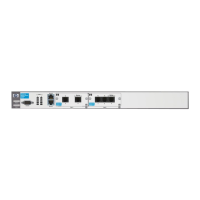B-12
Appendix B: Glossary
CVoDSL Channelized Voice over DSL. An ADSL feature that eliminates the need to use
IP or ATM to encapsulate voice. CVoDSL is transmitted directly to the voice
switch at the public carrier’s CO.
D
D4 A superframe format used on T1-carrier lines. The D4 frames consists of 12
193-bit frames combined into a single superframe.
DACS Digital Access and Cross-connect System (US). In the United States, a DACS
is a telecommunications device used to route T1-carrier lines. A DACS uses
D3/D4 framing to cross-connect any T1 DS0 channel (or a complete T1-carrier
line) in the system with any other T1 DS0 channel or line also in the system.
DACS can also be used with SONET.
DACS Digital Access Carrier System (UK). A digital system in the UK that provides
two subscriber lines over one copper twisted pair wire. DACS works by
digitizing the analog signal and sending the combined digital information for
both lines over the same copper pair between the exchange and the pole. The
cost of the DACS equipment is significantly less than the cost of installing
additional copper pairs; however, the maximum speed of an analog modem is
reduced on a line that uses DACS. This is because DACS involves an additional
conversion between analog and digital signaling.
Data Link Layer Layer 2 of the OSI model. At this layer, data frames are encoded and decoded
into bits. The Data Link Layer is divided into two sublayers: The Media Access
Control (MAC) layer and the Logical Link Control (LLC) layer. The MAC
sublayer controls how a computer on the network gains access to the data
and permission to transmit it. The LLC layer controls frame synchronization,
flow control, and error checking. See also OSI.
Data Link Layer
Protocols
A protocol that operates at the Data Link Layer of a network. Data Link Layer
Protocols provide service for Network Layer operations.
DBU Dial Back-Up. DBUs provide connection recovery and dial-up redundant
connectivity in case a primary WAN connection circuit fails.

